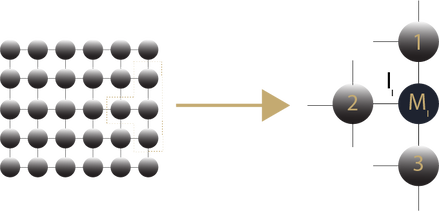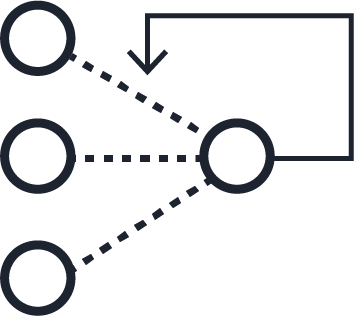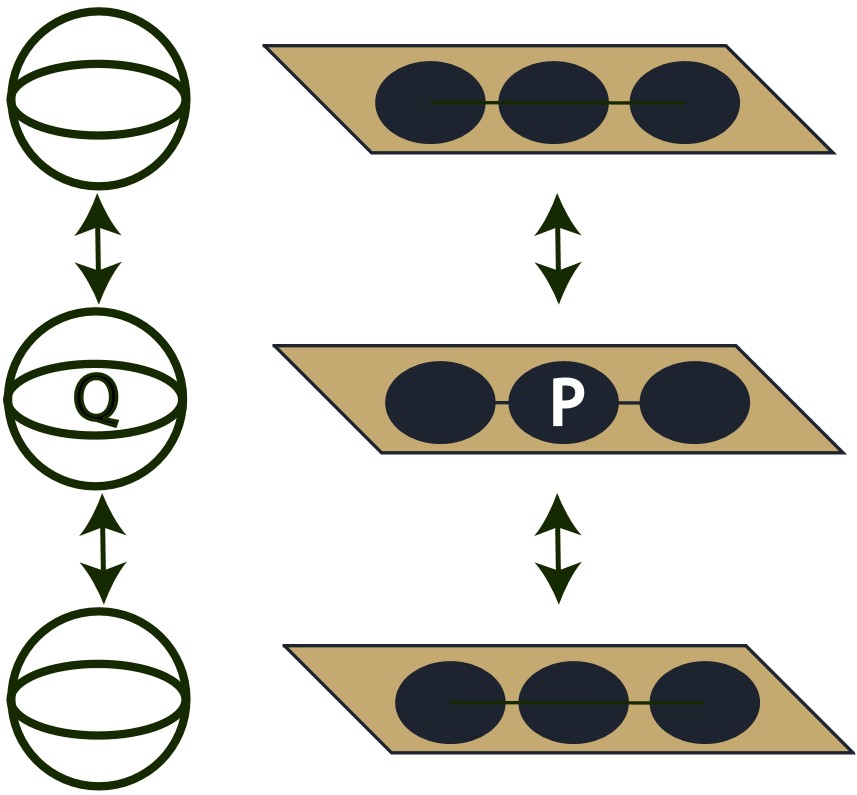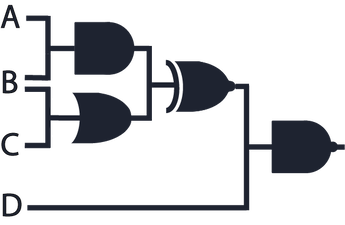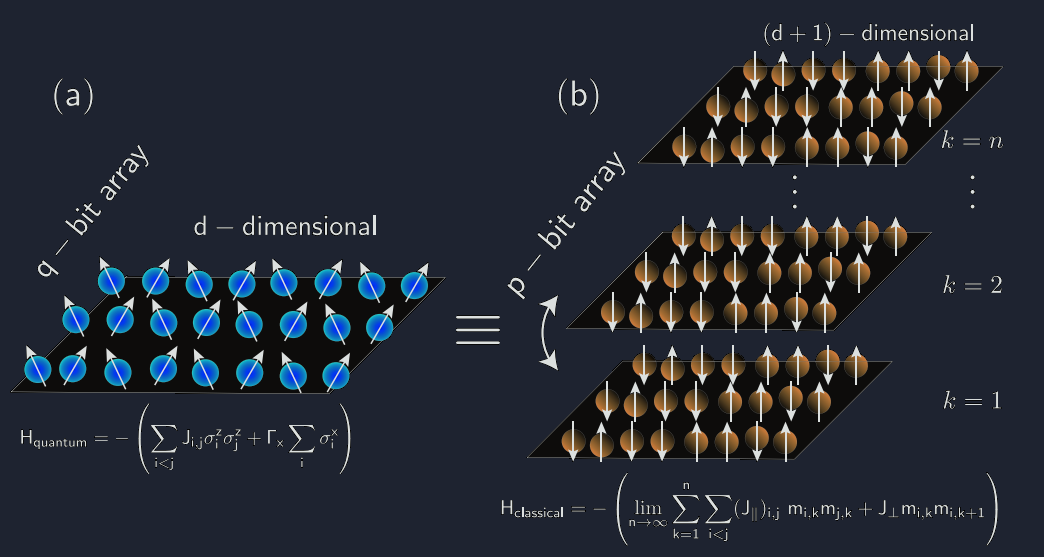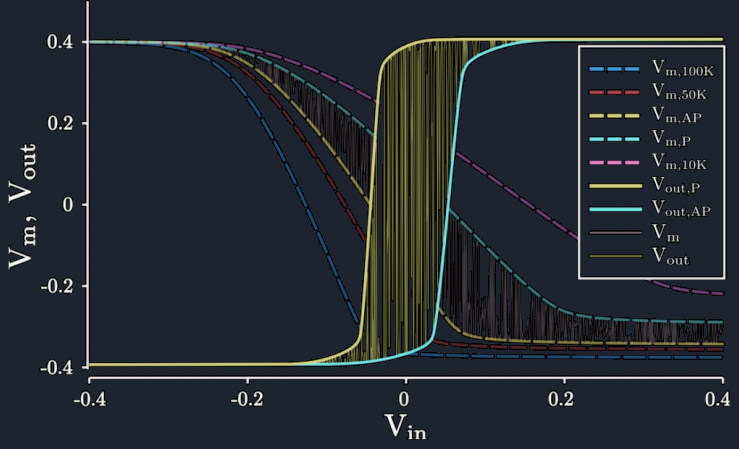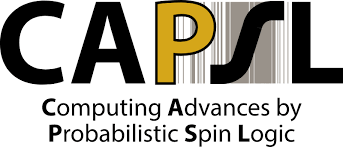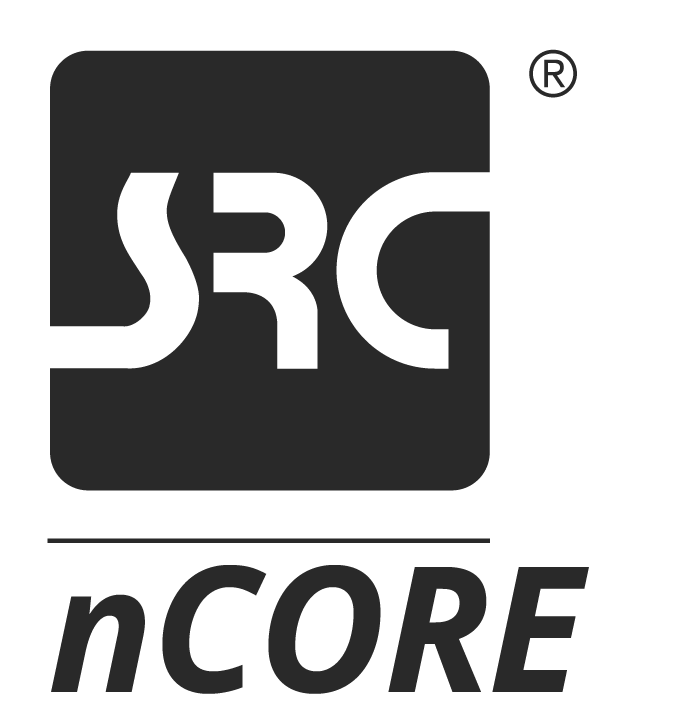Overview .
Purdue-P is an effort to design and implement devices to solve today's most difficult problems using Probabilistic Spin Logic.
|
The
majority of today’s digital circuitry is based
on
building blocks called bits that are
deterministically 0 or 1. At the other end of
the
spectrum are quantum computers consisting of
qubits
which occupy some superposition of 0 and 1. The
probabilistic-bit occupies a niche between these
extremes, sharing qualities with both the
classical-bit and the quantum-bit. The p-bit
fluctuates probabilistically between 0 and 1,
and
can be pinned to one or the other state based on
the
magnitude and sign of its input.
|
|
Just as a bit is only
useful
when in conjunction with other bits, p-bits can
be correlated by weights to form p-circuits.
These circuits can be programmed to tackle a
variety of problems, ranging from simulating
quantum problems to executing machine learning.
It is in the variety of applications, and the
classical nature of the p-bit that this building
block comes to life.
Probabilistic Spin Logic
entails the study of these probabilistic
networks.
Visit the blog for more information on probabilistic networks. |
Applications .
|
Invertible Boolean Logic
A set of weights and
biases that capture the behavior of some boolean
expression can be implemented in a p-circuit.
Pinning the output of this p-circuit will
encourage the input p-bits to occupy states that
satisfy the expression.
|
Tools .
The Purdue-P web simulator and Purdue-P Coprocessor have been
developed to simplify probabilistic spin logic execution. The web simulator
comes pre-loaded with example problems, while the coprocessor provides a
powerful, asynchronous execution method to study and execute large scale
p-circuits.
Purdue-P Web Simulator
Play around with the idea of
probabilistic spin logic with the Purdue-P web
simulator. See how this framework can solve problems
ranging from Max-Cut to factorization in a simulator
that runs the same algorithms as the FPGA.
Purdue-P Coprocessor
Set up MATLAB to connect to
the Purdue-P coprocessor and gain access to optimized
hardware that models probabilistic circuits
asynchronously. The FPGA coprocessor can expedite MATLAB
to allow studying larger networks faster.
Resources .
|
|
|
|
Dr. Supriyo Datta
explains the basics of probabilistic spin
logic
in this video
lecture. An extended, 50 minute version of this
lecture can be viewed here. Slides from
a recent talk for IBM by Dr. Datta can
be viewed here.
|
Dr. Kerem
Camsari reviews p-bits in this hour-long
tutorial.
|
Visit the Purdue-P blog
for up to date news and experimental work on probabilistic spin
research.
Visit New Era Electronics
for more efforts from Purdue like Purdue-P.
Research .
Integer factorization using stochastic magnetic tunnel junctions
|
Authors: William
A. Borders,
Ahmed Z.
Pervaiz,
Shunsuke Fukami,
Kerem Y.
Camsari, Hideo
Ohno & Supriyo
Datta
Abstract: Conventional computers operate deterministically using strings of zeros and ones called bits to represent information in binary code. Despite the evolution of conventional computers into sophisticated machines, there are many classes of problems that they cannot efficiently address, including inference, invertible logic, sampling and optimization, leading to considerable interest in alternative computing schemes. Quantum computing, which uses qubits to represent a superposition of 0 and 1, is expected to perform these tasks efficiently [1,2,3].... Access at: https://www.nature.com/articles/s41586-019-1557-9 Dmitri E. Nikonov commentary: https://www.nature.com/articles/d41586-019-02742-x Nature Editorial: https://www.nature.com/articles/d41586-019-02781-4 |
Weighted p-bits for FPGA Implementation of Probabilistic Circuits
|
Authors:
A.Z.Pervaiz,
B.M.Sutton, L.A.Ghantasala,
and K.Y.
Camsari
Abstract: Probabilistic spin logic is a recently proposed computing paradigm based on unstable stochastic units called probabilistic bits (p-bits) that can be correlated to form probabilistic circuits (p-circuits). These p-circuits can be used to solve the problems of optimization, inference, and implement precise Boolean functions in an ``inverted'' mode, where a given Boolean circuit can operate in reverse to find the input combinations that are consistent with a given output... Access at: https://ieeexplore.ieee.org/document/8515266 |
Scalable Emulation of Stoquastic Hamiltonians with Room Temperature p-bits
|
Authors: K.Y.
Camsari, S.
Chowdhury and
S.Datta
Abstract: Exploiting a well-established mapping from a d-dimensional quantum Hamiltonian to a d+1-dimensional classical Hamiltonian that is commonly used in software quantum Monte Carlo algorithms, we propose a scalable hardware emulator where quantum circuits are emulated with room temperature p-bits. The proposed emulator operates with probabilistic bits (p-bit) that fluctuate between logic 0 and 1, that are suitably interconnected with a crossbar of resistors or conventional CMOS devices... Access at: https://arxiv.org/abs/1810.07144 |
p-Bits for Probabilistic Spin Logic
|
Authors: K.Y.
Camsari, B.M.Sutton
and
S.Datta
Abstract: We introduce the concept of a probabilistic or p-bit, intermediate between the standard bits of digital electronics and the emerging qubits of quantum computing. We show that low barrier magnets or LBM's provide a natural physical representation for p-bits and can be built either from perpendicular magnets (PMA) designed to be close to the in-plane transition or from circular in-plane magnets (IMA). Magnetic tunnel junctions (MTJ) built using LBM's as free layers can be combined with standard NMOS transistors to provide three-terminal building blocks for large scale probabilistic circuits that can be designed to perform useful functions... Access at: https://arxiv.org/abs/1809.04028 |



